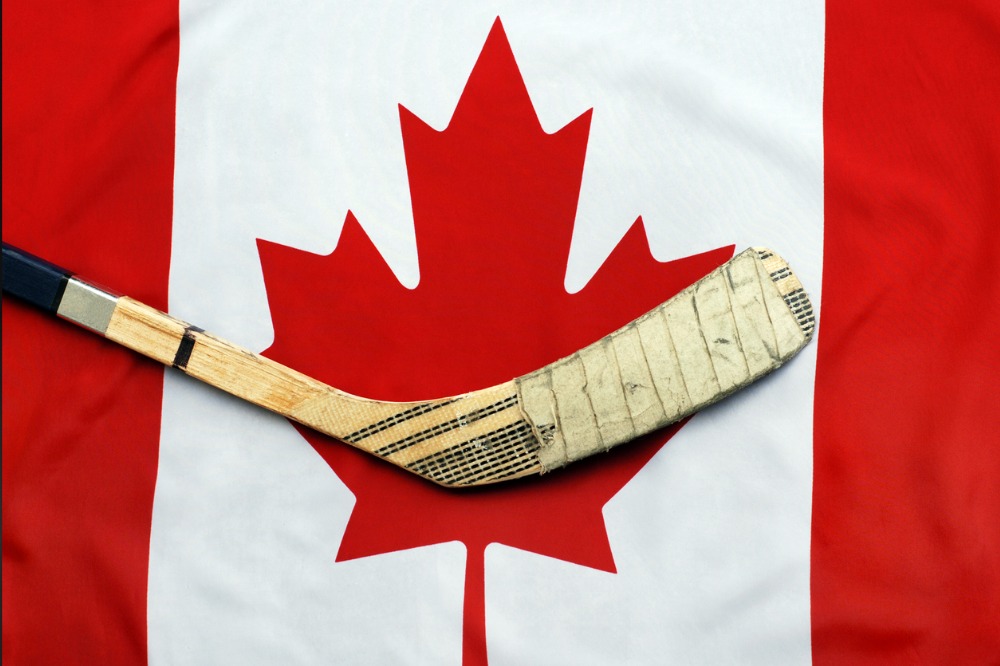Hockey Canada updates on post-scandal approach to sports safety

Hockey Canada updates on post-scandal approach to sports safety | Insurance Business Canada
Insurance News
Hockey Canada updates on post-scandal approach to sports safety
Data, education high on agenda – but “change takes time”, says VP
Insurance News
By
Jen Frost
Hockey Canada has looked to data collection and sharing in addition to greater education and awareness in a bid to clean itself up after last year’s sexual assault revelations, but there is more to do to fix the “status quo”, conference attendees heard.
“I would suggest the last year we’ve taken a different approach, we’ve looked at risk management through a holistic lens, and a proactive lens of different elements that really put together a robust risk management program,” Natasha Johnston (pictured below, left), Hockey Canada vice president, sport safety told delegates at RIMS Canada 2023 in Ottawa last week.
The grassroots and national sporting organization last year faced an exodus of sponsors and was grilled in parliament after allegations emerged that a woman had been sexually assaulted by eight former Canadian Hockey League players in 2018.
It was also criticized following widespread publicity around its national equity fund, reportedly partly used to settle abuse claims.
Last October, with culture at the organization under fire, Hockey Canada CEO Scott Smith stepped down, along with its board.
The organization has sought to clean up its culture with the introduction of its ‘action plan’, but with around 500,000 players and 13 member branches across Canada, and many people involved in the organization volunteers, Johnston said that “change takes time and understanding”.
“The benefit of such a large NSO [national sporting organization] is there’s capacity there that maybe others don’t [have],” Johnston said. “The challenge of being such a large NSO is sometimes it’s a little bit more challenging to move that ship across.”

Hockey Canada looks to data drive
Hockey Canada is pinning some hopes of stamping out bad behavior on data, risk managers gathered in Ottawa heard.
At the national level, an independent reporting mechanism is in place, Johnston said, but this was “not enough” for Hockey Canada, with potential for a conflict at community level. As part of Hockey Canada’s action plan, an independent third party has been collecting data that will help inform how the organization moves forwards, Johnston said.
“I think all of us have a sense as to where those pressure points are, but we never had the data to be able to point to it and say there’s discrimination [for example] … within this gender, [or] at this level of competition,” said Johnston.
Metrics will help inform the organization of environments that could be leading to unwanted “behaviours”, Johnston said, though Hockey Canada itself will not have access to confidential details.
Hockey Canada expects to share data with the public in October.
Education and messaging – Hockey Canada looks to get targeted
Canada’s hockey sporting body is also looking at how it engages with members, in a bid to keep its messaging “appropriate” for different age groups.
“The other piece that we’re really, really looking at this year is how do we do education and awareness, because I would suggest that the status quo is not working, we’re not seeing the change that we want to see happen,” Johnston said.
Catching players at a “young age” is critical, according to Johnston, who said that “by the time they make our national [team] it’s too late, to be very honest”.
Where it comes to the national team, “we educate, we re-educate, we communicate”, Johnston said, with players now required to undergo sexual assault training.
Gender expression and maltreatment have been key topics communicated to the organization’s “well-meaning” volunteers, Johnston said, with more to follow.
Hockey Canada has also upped scrutiny in the screening process, including on social media.
“I don’t care how good you are [on the ice], you need to meet the values and ethics of the organization first and foremost, and then your skills will hopefully be there as well.”
Adoption of Universal Code of Conduct (UCoC) 6.0 to prevent and address maltreatment in sport.
Implementation of a transparent tracking and reporting system for all complaints, with annual public disclosures to ensure accountability.
Intensified training for players, coaches, employees, and volunteers, emphasizing masculinity, consent, and toxic behaviors, fostering a culture of open communication in hockey.
Comprehensive independent review of existing training programs.
Introduction of enhanced character screening for high-performance players.
Introduction of a lifetime ban for breaching the Code of Conduct or non-participation in investigations.
Priority investment in a dedicated department for safe and inclusive sport initiatives, covering harassment prevention, abuse prevention, injury reduction, mental health, and gender equality.
Hockey Canada has also pledged:
An independent review of Hockey Canada’s governance, including National Equity Fund.
Be a full signatory to Office of Sport Integrity Commissioner (OSIC) for oversight of complaints in national programming.
The creation of an independent, confidential complaint system for maltreatment at regional, provincial, and local hockey levels.
Hockey Canada – six areas of focus and four ‘pillars’
Johnston flagged six key areas of focus for Hockey Canada, namely maltreatment, gender identity and expression, injury prevention and mental wellbeing, competition manipulation, anti-doping, and ethics.
The organization has looked to four “pillars”, Johnston said, naming these as protection, educational awareness, reporting, and advocacy.
Earlier this month, we gathered stakeholders from across the country for the first #BeyondTheBoards Summit.
🎥 https://t.co/MpIrqTMYwV pic.twitter.com/FPtLbnYQL1
— Hockey Canada (@HockeyCanada) September 19, 2023
“[It extends] across all of our departments and needs to become a philosophy that needs to be embedded in everything that we do, so it doesn’t become an afterthought, it becomes part of how we want to conduct our business moving forward, and we start working … with our members and the local associations to share that philosophy,” Johnston said.
The organization’s partnership with its insurance broker BFL Insurance and insurance companies is one “element” within the pillars, but “it can’t be the only one”, Johnston said.
“We work with them to look at those corrective ways that we can hopefully negate risk as much as possible – understanding there will always be risk in sport, but [asking] how do I do so in a way again, that is proactive, holistic, and we’ve put in place the right pillars to be able to address the many issues that we take on.”
How well does Hockey Canada’s action plan tackle the problem of abuse and culture in sport? Share your thoughts in the comments below.
Related Stories
Keep up with the latest news and events
Join our mailing list, it’s free!






